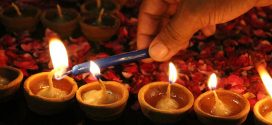How often do we judge people by appearances? The answer is – “almost always”.
As you go through your day, whether walking in the street, travelling in a bus or local train, shopping, banking, working – the brain carries on cataloguing people subconsciously with no active effort as we go through our routine life – ranging from… “that’s a smart guy” to “he is in need of a haircut” or “she looks like she’ll be traditional” to “God, what is she wearing?“…
Not only that, but we also tend to place people in terms of origin, nationality, religion, economic status and sometimes race based on how they look. Sounds a bit judgemental, right, but true nevertheless.
And then there is the whole digital life on social media, where people put their photographs asking for the opinion of others, and it is not uncommon to see people being trolled for their appearance. The tendency to criticize someone who appears different is not new – but there seems to be more and more divide in the world amongst people on basis of racial, geographical and religious ethnicity.
As Indians, we are fortunate to have inherited the concept of “culture based” ethnicity, but as the times change, we also need to look into not only how we identify ourselves, but what we show to the world.
In a country like India, you usually know your place as you grow up, sometimes to the nth degree, tied as we are by our families going back generations and a culture enriched with thousands of years of history. Every day of our calendar is marked for something special, and so our years of growing up are so rich with cultural heritage, that our ethnicity is formed without effort. We settle into the same pattern, like the same food, worship the same Gods, and proclaim our identity in the same way as our ancestors have done. Our ethnicity as Indians – and further down to state, caste and creed are declared in our personality and appearance even without a conscious effort.
For example, take the biggest component of our appearance – clothing, especially women’s clothing. A woman wearing a saree anywhere in the world will be undoubtedly connected with Indian heritage by all onlookers. And if she were in India, based on the saree and the style with which it has been worn, will declare whether she is Gujarati, Marathi, Bengali and so on. Not only that, you could even make a fair assumption of her economical as well as family background. Centuries have passed, but the saree has survived as an identity for Indian women, irrespective of other features including height, body type, hair, eyes or skin colour.
Additionally, as women explored professional careers and adopted more westernized clothing, even salwar-kameez, skirt, lehangas, chaniya-choli, etc. have all slowly moved to the category of “ethnic wear“. I find this term used by the fashion industry very interesting – it doesn’t say just traditional or occasion-based clothing. It is linked to our identity as people from Indian sub-continent, and it can be just as diverse as we are.
And same goes for men’s clothing – although dhoti and lungis are still holding on, the kurta pajamas have expanded from home wear to mind-blowing sherwani-churidars. And once again, no matter where you are in the world, you will be catalogued as Indian if you showed up in such costume. Once again, you could hail from any part of India, and maybe as different in looks as chalk and cheese, but by adopting the same ethnic wear, you adopt the same cultural ethnicity.
As superficial as the clothing may appear, it goes much deeper. Cloth manufacturing was an inherent part of our agriculture based economy, from the humble cotton weaving to rich Dhakai Malmal, each fabric was special, each technique and associated knowledge of threads, looms, dyes, designs and layouts were developed and passed on through generations. Essentially, we not only told our stories through books, sculptures and cave pitoning, we also wove them in fabric and adorned ourselves with it.
Take any popular saree across India – whether it is the Banarasi or Kanchipuram silk, Paithani or Patola or Bandhanis, each saree tells a tale of heritage so rich, it could make you weep.
The rich needle and embroidery work, sometimes including gold and silver threads were the pride of our artists. You only need to take a look at the heavy zardozi or fine chickenkari to admire the length and breadth of the talent that goes into creating the lovely clothing that is our pride to wear.
And no wonder then that we might live in a pair of jeans a lot of time, but come festivals, or family functions, we go back to the ethnic wear. Because the celebrations just don’t feel complete without them. Your appearance adds to the sense of belonging, a sense of “fitting-in” with those who are celebrating with you – the loved ones, friends, family, neighborhood, community and the whole country.
And what is our ethnicity, but that sense of having roots and belonging? By choosing our appearance as adults, we choose our identity.
So, what is your favorite ethnic wear? And, from where do you love to buy it? And Why? Your comments may help others finding a better alternative for their choices :-).
 ThinkerViews – Views And Reviews Personal views and reviews for books, magazines, tv serials, movies, websites, technical stuff and more.
ThinkerViews – Views And Reviews Personal views and reviews for books, magazines, tv serials, movies, websites, technical stuff and more.




